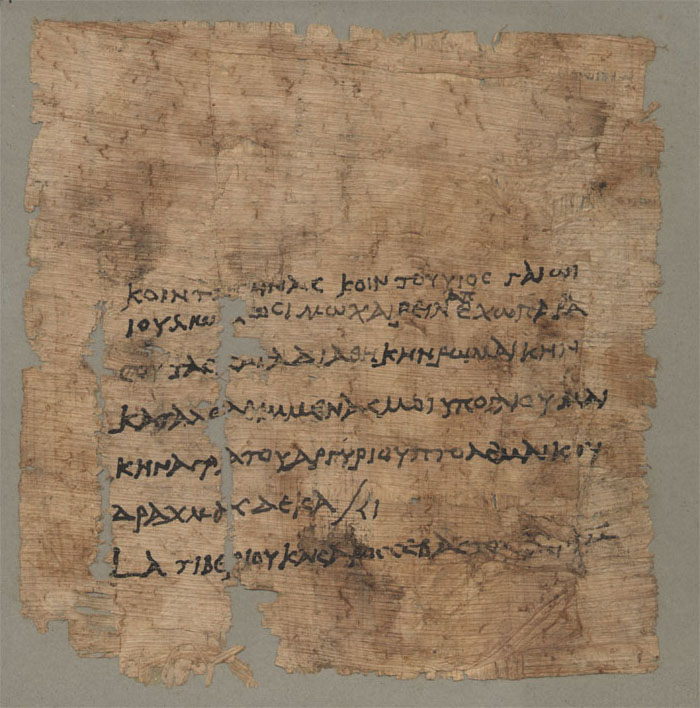P.Hawara

The Hawara Papyri
William Flinders Petrie excavated at Hawara in
1888. After working in Medinet el-Fayum (Arsinoe) and Biahmu, he moved
on to the site south of Arsinoe and took the 60 workers he had already
employed at the former sites with him. The results of his excavations at
Hawara were published in 1889 in his "Hawara, Biahmu, and Arsinoe". The
papyrological material said to have been found at Hawara was studied by
Prof. Sayce and published on pages 24 to 37 of that volume. Sayce gave a
general description of the great papyrus roll which contains parts of
books 1 and 2 of the Iliad (the "Hawara Homer"), emphasizing the
importance of the variants, and edited the texts of the most complete
documents, some of them in a very preliminary way.
J. G. Milne undertook a new edition of 37 of these papyri in the Archiv für Papyrusforschung
5, 1913, 378-397. He did not work on the Hawara Homer but concentrated
on the smaller literary texts and gave a proper publication of some more
documents. The texts which were not reconsidered in Milne's publication
were reprinted in Sammelbuch I (nos. 5220, 5223, 5224).
When Flinders Petrie brought his finds back to
England, the material was divided between several institutions. The
Hawara Homer was given to the Bodleian Library in Oxford (where it
still is today), while all the other papyrological material stayed in
London and was given to the Department of Egyptology at University
College London. In 1948, the young professor of Papyrology, Eric Turner
received permission from the then Professor of Egyptology, J. Czerny, to
take the Hawara papyri to the Department of Greek and Latin at UCL and
to keep them there in his custody. A letter from 16 June 1949 confirms
the transfer of the papyri. They were kept in a secret place in the
department for more than 50 years.
As usual, Flinders Petrie did not give precise
indications, as to where the papyri were found on the site. He just
mentions that the region north of the pyramid "was the usual place for
burials in the early Roman period , when gilt cartonnage busts were
used. Papyri from the Ist and IInd cent. AD are also usual in the soil
here, and for some way north" (p. 8, no. 11; cf. the map on plate XXV in
the book).
When the papyri arrived in London they were
"ironed" by Petrie's friend, Mr. Spurrell who also helped in "unpacking,
arranging, and managing the collections" (p. 4). It must have happened
then that all the pieces were glued onto greyish cardboard. When writing
was distiguishable on the back of the papyri, windows were cut out to
make the letters (at least in part) visible. In some instances, Petrie
added small notes in pencil about find-spots. In later years, Walter
Cockle removed some of the papyri from their cardboards and put them
under glass. The cardboard frames of these pieces were nevertheless
kept.
It is a desideratum to make digital images of
at least the published papyri accessible on the internet. None of the
Hawara papyri (except for single columns of the Hawara Homer, Hawara
epigrams, and the Periegesis of Attica), have ever been shown in
photographs.
 e-corpus is a collective digital library that catalogs and disseminates numerous documents: manuscripts, archives, books, journals, prints, audio recordings, video, etc.
e-corpus is a collective digital library that catalogs and disseminates numerous documents: manuscripts, archives, books, journals, prints, audio recordings, video, etc.
















 Stumble It!
Stumble It!
